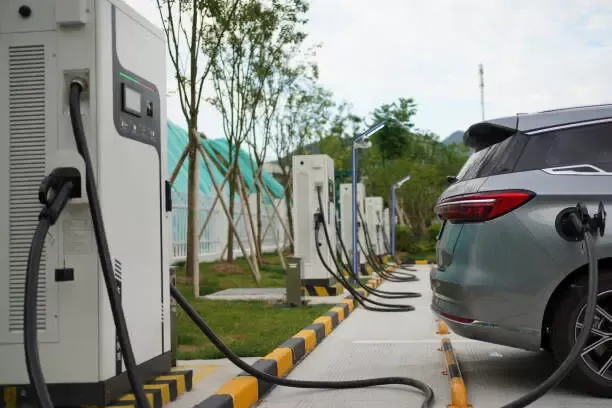Notifications

7 minutes, 22 seconds
-13 Views 0 Comments 0 Likes 0 Reviews

As a professional EV charger manufacturer in China, Topper Company provides dependable electric vehicle charging equipment and comprehensive charging solutions.
As electric vehicles (EVs) gain mainstream traction, the focus is shifting beyond hardware to the digital infrastructure that powers seamless mobility. Among these critical enablers is the roaming hub—a behind-the-scenes powerhouse that ensures drivers can charge across different networks without hassle.
While battery tech and fast-charging stations often dominate headlines, roaming hubs are quietly solving one of the biggest pain points in EV adoption: charging interoperability. In today’s fragmented landscape, EV drivers frequently encounter barriers when venturing beyond their home networks. Roaming hubs resolve this by uniting Charge Point Operators (CPOs) and eMobility Service Providers (eMSPs) under a centralized system, creating a unified, hassle-free charging experience.
A roaming hub is a centralized digital platform that enables EV drivers to access charging stations across multiple networks using a single account, app, or RFID card. It functions similarly to mobile roaming, where users connect to foreign carriers without switching SIM cards.
By acting as the intermediary between CPOs and eMSPs, the roaming hub unlocks:
Cross-platform interoperability
Real-time charger data
Unified billing and authentication
Smarter travel planning
In essence, roaming hubs are vital for scaling a truly accessible global EV charging infrastructure.
Roaming hubs do more than just connect systems—they streamline operations, enable financial settlements, and provide data intelligence. Here's how:
The core function of a roaming hub is to ensure seamless communication between CPOs and eMSPs. Real-time data synchronization allows users to view availability, pricing, and compatibility, regardless of the operator.
In regions like Europe, where crossing national borders is routine, roaming hubs are essential. They eliminate the need for multiple apps or registrations when traveling between countries—offering a single, unified charging experience across borders.
Whether a driver plugs in at a local charger or one abroad, roaming hubs standardize the user experience—from authentication and charging to billing. This builds user trust and loyalty while reducing operational complexity for service providers.
Instead of requiring one-to-one agreements between each CPO and eMSP, roaming hubs act as neutral brokers, enabling one-to-many connections. This simplifies integration and accelerates ecosystem expansion.
Roaming hubs handle pricing data, session logs, and cross-party settlements—automating payments even across different currencies or tax jurisdictions. This ensures transparent, accurate transactions and financial integrity.
By collecting and analyzing charging data, roaming hubs help stakeholders identify:
Usage trends
Peak demand periods
Underused locations
Expansion opportunities
This insight fuels smarter infrastructure investments and policy decisions.
CPOs and eMSPs first establish legal and technical agreements—covering access, pricing, privacy, and data formats. Roaming hubs streamline and standardize these agreements for easier onboarding.
Once connected, roaming hubs manage:
User authentication
Real-time charger availability
Dynamic pricing display
Charging session logging
Billing and settlement processing
Major roaming hubs include Hubject, GIREVE, and e-clearing.net—each with distinct coverage areas and technical frameworks.
Communication between networks is governed by open protocols such as:
OCPI (Open Charge Point Interface) – Real-time data exchange between CPOs and eMSPs
OICP (Open InterCharge Protocol) – Used by Hubject for session handling and billing
eMIP – GIREVE’s protocol for secure interoperability across Europe
These protocols ensure smooth communication, no matter the network.
From the driver’s perspective, roaming is frictionless. They use their usual eMSP app or RFID card to initiate charging. The roaming hub validates credentials, confirms pricing, and manages the session, with billing handled post-charge—all through their existing account.
Universal access: Charge anywhere within the roaming network.
One app, one card: No need for multiple accounts.
Transparent pricing: Real-time cost visibility and charger status.
Increased utilization: Broader reach for existing infrastructure.
Customer loyalty: Enhanced satisfaction and engagement.
Simplified operations: Automated billing, data sharing, and reconciliation.
Higher EV adoption: Removes usability barriers.
Data-driven planning: Smarter policy and infrastructure decisions.
Cross-border harmonization: Supports international travel and trade.
Despite clear benefits, roaming hubs face challenges:
Lack of Global Standards: Disparate protocols hinder seamless integration.
Pricing Transparency: Varying dynamic pricing may confuse users.
Data Privacy and Security: Handling user and commercial data demands robust safeguards.
However, regulatory frameworks like the EU’s AFIR (Alternative Fuels Infrastructure Regulation) and North America’s NEVI initiative are pushing for standardization and open access.
Emerging technologies—like blockchain for smart contracts and AI-powered route optimization—promise to make roaming hubs even more secure, intelligent, and efficient.
Roaming hubs are not just digital infrastructure—they are cornerstones of the EV ecosystem. By connecting networks, streamlining billing, and enabling true mobility without borders, they make EV charging more accessible, predictable, and user-friendly.
As the EV market continues to grow, roaming hubs will play an increasingly pivotal role in ensuring that charging infrastructure keeps pace—not just in quantity, but in quality, convenience, and connectivity.Know more about Google SEO Directory
China EV Chargers EV Charger Manufacturer EV Charging Solutions

